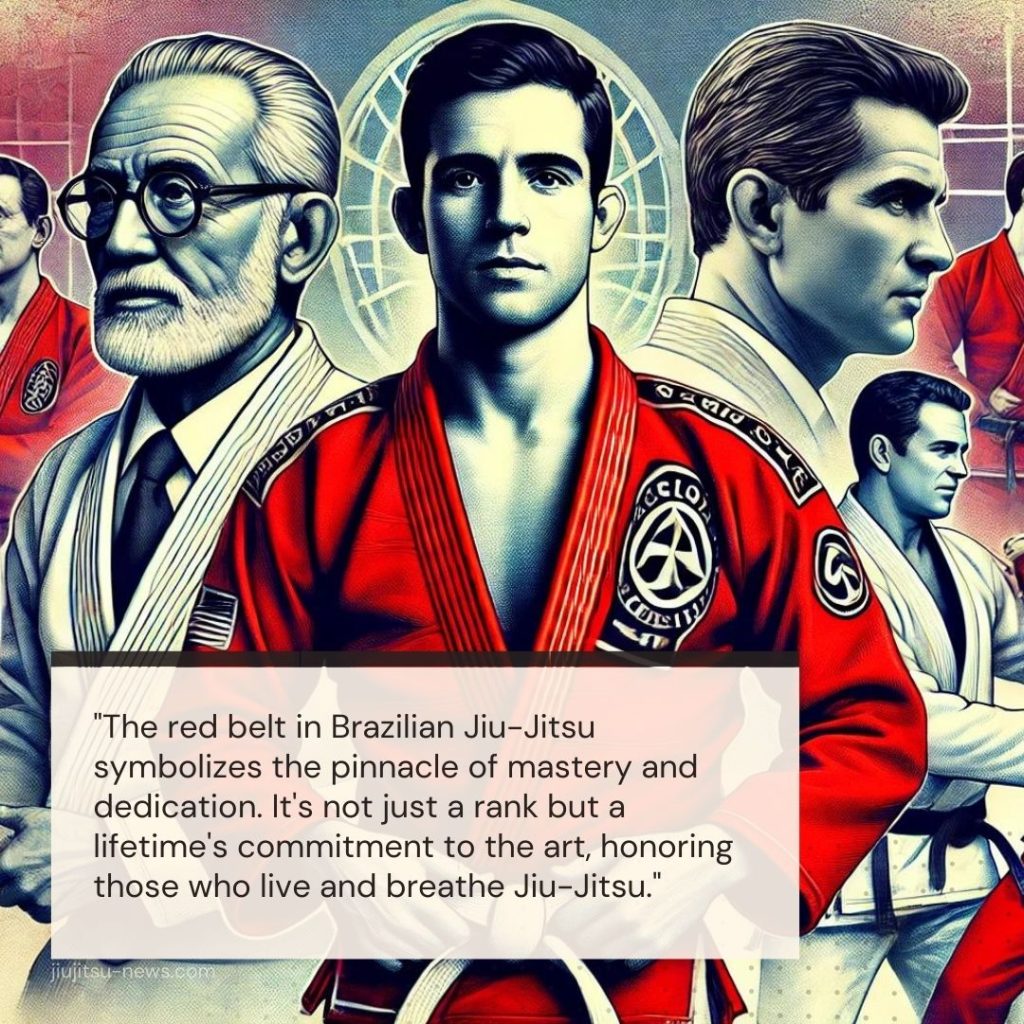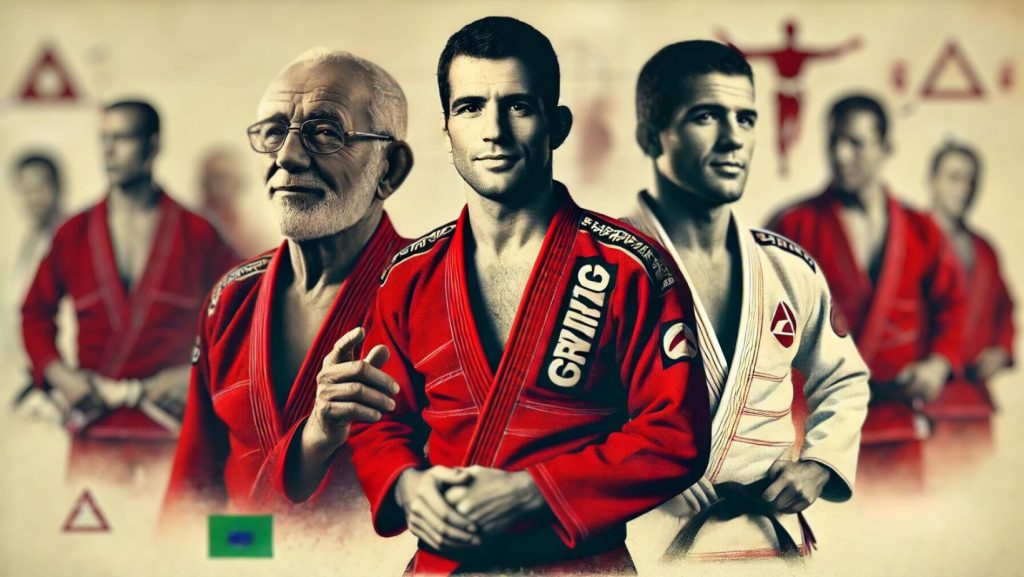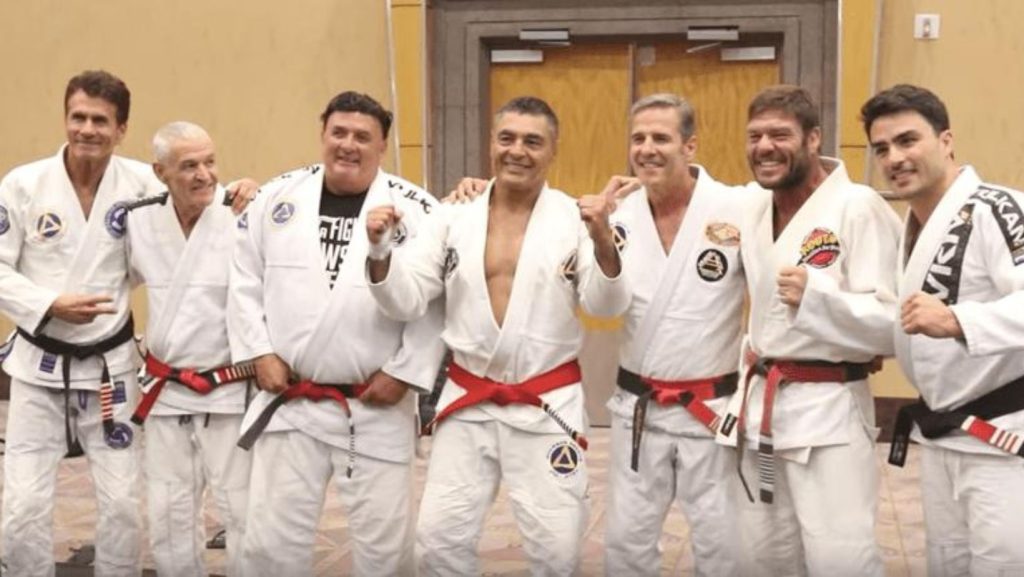
The red belt is the highest level in Brazilian jiu-jitsu ranking system.
It denotes exceptional BJJ expertise and profound philosophical insight achieved only by the most dedicated practitioners.
Let’s explore its significance and the elite individuals who wear it with honor.
The Journey to Red Belt

The journey from a white to a red belt is long and challenging.
A BJJ practitioner must train for decades to be considered for this high honor.
To achieve a red belt, one must demonstrate technical proficiency and a deep philosophical understanding of BJJ.
Typically, a practitioner would spend at least 48 years at the black belt level before being eligible for a red belt.
Otherwise, this rank is more reserved to honor the founders and grandmasters who have shaped the sport.
The Significance of the Red Belt in BJJ Culture
For those in the BJJ community, the red belt symbolizes technical skills and a lifetime of learning and teaching. It represents wisdom, patience, and dedication.
The red belt constantly reminds us that BJJ is more than just a sport; it’s a way of life that shapes character and philosophy.
The Life of a Red Belt
Red belt holders in BJJ are revered as guardians of the sport’s traditions and techniques.
Their daily life involves training, mentoring younger practitioners, and leading prominent training academies.
They are expected to uphold and propagate BJJ’s ethical and philosophical standards, ensuring that the art continues to grow in spirit and integrity.
Notable Red Belt Masters

In Brazilian Jiu-Jitsu, red belts symbolize the epitome of knowledge and influence within the martial arts community.
These grandmasters have achieved the highest level of technical skill and significantly shaped the art’s development and culture.
Here is an overview of some of the most distinguished red belt holders and their contributions to Brazilian Jiu-Jitsu:
Carlos Gracie Sr.
Often hailed as the founding father of Brazilian Jiu-Jitsu, Carlos was pivotal in developing and spreading BJJ globally.
He established the first BJJ school in 1925 alongside his brothers, setting the foundation for the martial art.
Gastão Gracie
As a brother to Carlos and Helio, Gastão played a crucial role in establishing and nurturing the BJJ school in Rio de Janeiro, Brazil.
George Gracie
Known as the original champion of the Gracie family, George was more of a formidable competitor than a teacher.
He spent his career competing across Brazil and emphasizing the effectiveness of BJJ in actual combat.
Hélio Gracie
Helio stood at the forefront of Red Belt grandmasters. His focus on leveraging BJJ as a practical self-defense technique has left a lasting legacy on martial arts teaching methodology.
Pedro Hemeterio
Hemeterio was the first non-Gracie to attain a red belt and was instrumental in popularizing BJJ outside the Gracie family.
João Alberto Barreto and Reyson Gracie
Both red belts under grandmaster Helio Gracie have significantly taught and spread BJJ.
Flavio Behring
As a student under Helio Gracie and João Alberto Barreto, Flavio has made substantial contributions to BJJ, especially in developing its curriculum.
Carlson Gracie
Son of Carlos Gracie Sr., Carlson was a cornerstone in the evolution of Brazilian Jiu-Jitsu, known for his competitive spirit and innovative teaching methods.
Oswaldo Fadda
A notable non-Gracie, Fadda was essential in popularizing BJJ among Brazil’s less affluent populations and was a pioneer in the use of footlocks.
Rickson Gracie
Often considered the most excellent BJJ practitioner of all time, Rickson’s techniques and competitive record have significantly influenced modern BJJ.
Carley Gracie
Another son of Carlos Gracie Sr., Carley was instrumental in introducing BJJ to the United States, aiding its global spread.
Robson Gracie
A respected teacher and competitor, Robson was pivotal in administering and formalizing sports regulations within the Brazilian Jiu-Jitsu Federation in Rio de Janeiro.
Mauricio Motta Gomes
Mauricio is known for his technical prowess and contributions to developing BJJ in Europe, particularly in the UK.
Rorion Gracie
As the Ultimate Fighting Championship (UFC) co-founder, Rorion played a crucial role in introducing BJJ to a global audience, showcasing its effectiveness in mixed martial arts.
Carlos “Caique” Elias
A student of Helio Gracie, Caique has been crucial in promoting BJJ’s self-defense aspects and has established a significant academy in the United States focusing on the core principles taught by Helio.
Osvaldo Alves
Alves, a technical director at the International Brazilian Jiu-Jitsu Federation (IBJJF), has played a significant role in defining the technical standards for BJJ competitions worldwide.
Conclusion
The red belt in Brazilian Jiu-Jitsu is a rare and prestigious title that marks the highest level of mastery in this martial art.
It’s a testament to the enduring spirit of those who dedicate their lives to practicing, teaching, and evolving the art of BJJ.
Related: Prove your mastery of Brazilian Jiu-Jitsu with our Ultimate Quiz! Test your knowledge of techniques, famous fighters, and more. Start the challenge now!



